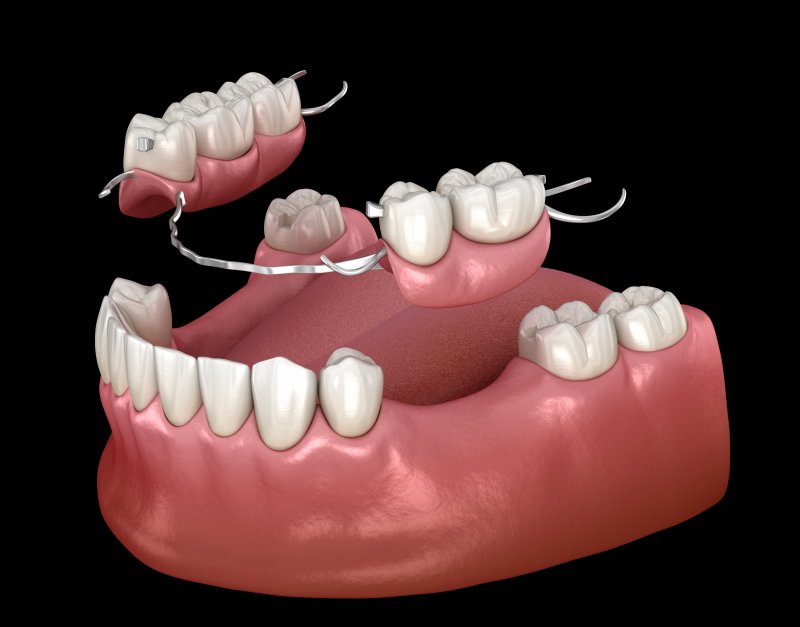For accurate pictures of partial dentures, search online for various types like cast metal, flexible, and acrylic partial dentures. These images can provide valuable insights into the appearance and options available for partial dentures, helping you make informed decisions about your dental care.
Additionally, you can explore before-and-after photos in the smile gallery to see the natural-looking results achieved with different types of partial dentures. Whether you are considering removable or fixed partial dentures, these visuals can offer a better understanding of the options and help you visualize the potential outcome of your dental treatment.
Introduction To Partial Dentures
Explore a variety of Partial Dentures Pictures showcasing different types and materials used in creating partial dentures. From cast metal to flexible options, find insights on cost, types, and the most natural-looking choices. Discover how partial dentures blend seamlessly for a natural appearance.
| Introduction to Partial Dentures: Partial dentures are a common dental solution for those who have lost one or more teeth. They are designed to fit in with your existing teeth and restore your smile to its former glory. Partial dentures can play a crucial role in smile makeovers, as they can help fill in gaps and create a more even appearance. There are several types of partial dentures available, including cast metal, flexible, and acrylic. Each type has its advantages and cost considerations, and your dentist can help you choose the best option for your needs. |
| Types of Partial Dentures: There are three main types of partial dentures: cast frame, flexible base, and acrylic. Cast frame partials are the traditional type and are the most durable. Flexible partials offer esthetic advantages as the clasps are the color of natural gum tissue. Acrylic partials are the most affordable option and are typically used as a temporary solution. Regardless of the type, partial dentures are designed to look like natural teeth and can be customized to fit your unique needs and preferences. |
Before And After: The Transformation
Get a glimpse of the remarkable transformation with these before and after partial dentures pictures. Witness the incredible change as missing teeth are replaced, restoring a natural and confident smile. Discover the range of options available, from cast metal to flexible partial dentures, each tailored to provide a seamless and comfortable fit.
| Discover the life-changing impact of partial dentures through real-life smile transformations. |
| Explore a gallery of patient case studies showcasing before and after images. |
| Partial dentures come in various types like removable, flexible, and cast metal, each offering unique benefits. |
| The flexible partial denture is popular for its natural-looking appearance that seamlessly blends with existing teeth. |
| With acrylic, porcelain, or other materials, partial dentures are designed to resemble natural teeth for a discreet look. |
Types Of Partial Dentures
The most common types of partial dentures include cast metal partials, flexible partials, and acrylic partials. Cast metal partials are the traditional option known for their durability. On the other hand, flexible partials offer esthetic advantages with clasps that blend in with natural gum tissue. Acrylic partials are another option that provides a natural teeth appearance. These different types cater to various preferences and needs, allowing individuals to choose the most suitable option based on their specific requirements and lifestyle.

Credit: www.nelsondentalcarela.com
Materials Matter: A Closer Look
When it comes to partial dentures, the material used is crucial. Acrylic is affordable and lightweight but less durable. Porcelain is more natural-looking but can be fragile. Metal options are strong and hypoallergenic. Biocompatibility is important for oral health. Aesthetics matter too, as the dentures should blend in seamlessly.
Design And Fit: Crafting Comfort
Partial dentures pictures are a vital aspect of the design and fit process. Customization plays a crucial role in ensuring a natural fit that prioritizes comfort and functionality. The crafting process involves meticulous attention to detail, aiming to create a seamless integration with the existing teeth. This customization process encompasses the unique characteristics of the individual’s oral structure, ensuring that the partial dentures provide optimal comfort and functionality. It involves precise measurements and adjustments to achieve a natural-looking fit that enhances the overall comfort and usability. The fitting process is a collaborative effort between the patient and the dental professional, culminating in partial dentures that blend seamlessly with the natural teeth.
The Cost Factor
The cost of partial dentures varies depending on the type. For cast metal partial dentures, the price range is typically between $300 and $500. Flexible partial dentures may cost $700 to $2000 due to their natural appearance and comfort. Acrylic partial dentures are more affordable, ranging from $300 to $600. Insurance plans may cover a portion of the cost, and dental offices often offer financing options to help manage expenses.
Maintaining Your New Smile
Maintaining your new smile with partial dentures is crucial for oral health. Regular cleaning and proper care will help keep your partial dentures looking natural and functioning well. By following the dentist’s instructions and scheduling routine check-ups, you can ensure a lasting, confident smile.
Maintaining your new smile includes care and cleaning of partial dentures. Tips for long-term maintenance ensure durability. Regular cleaning with a soft brush and mild soap keeps them looking natural. Avoid hot water which can damage the material. Store them in water when not in use to prevent warping. Visit your dentist for routine check-ups to ensure proper fit and function. Follow these guidelines for a long-lasting, confident smile.
Common Questions Answered
When it comes to partial dentures, many people have questions about their appearance and whether or not others will be able to tell that they are wearing them. The good news is that modern dentures are designed to look very natural and blend in with your existing teeth and gums. In fact, if the most important consideration for you is how your partial denture will look, the flexible partial denture may be your best option. The plastic/nylon structure is made to look very natural and the clasps are the color of natural gum tissue.
There are three main types of partial dentures: cast frame partials, flexible base partials, and acrylic partials. The cast frame type is the traditional partial and is the most durable. The flexible partial offers esthetic advantages in that the clasps are the color of natural gum tissue. Partial dentures come in both upper and lower versions, with acrylic, porcelain, or other materials used to make artificial teeth.
Conclusion: Embracing Change
Embracing change with partial dentures pictures can transform your smile seamlessly. Natural-looking flexible partial dentures blend harmoniously for a confident appearance. Choose from various types of partial dentures to suit your needs and budget.
| Partial dentures offer a natural look and blend seamlessly with existing teeth. |
| Options include flexible, cast metal, and acrylic partial dentures for durability and aesthetics. |
| They are available in upper and lower versions, crafted from materials like acrylic and porcelain. |
| Flexible partial dentures are highly recommended for a natural appearance. |
| Acrylic partial dentures are removable and come in various types to suit individual needs. |
| Consult a dentist to determine the best partial denture type for your smile makeover. |

Credit: sonorandesertdentistry.com

Credit: www.dentureliving.com
Frequently Asked Questions
What Is The Most Natural Looking Partial Denture?
For the most natural-looking partial denture, consider a flexible partial denture made of plastic/nylon that blends seamlessly with your existing teeth and gums.
What Are The Three Types Of Partial Dentures?
There are three types of partial dentures available: cast frame partials, flexible base partials, and acrylic partials. Cast frame partials are the traditional option and the most durable. Flexible partials offer esthetic advantages with clasps that blend in with natural gum tissue.
Acrylic partials come in both upper and lower versions with artificial teeth made from materials like porcelain or acrylic.
What Will My Partial Denture Look Like?
Your partial denture will resemble natural teeth, blending seamlessly with your existing teeth and gums. It comes in upper and lower versions, made of materials like acrylic or porcelain.
Can You Tell If Someone Is Wearing Partial Dentures?
Yes, it can be difficult to tell if someone is wearing partial dentures.
Conclusion
Choosing the right type of partial dentures is crucial for a natural look. Whether it’s cast frame, flexible base, or acrylic partials, each offers unique benefits. With proper care, partial dentures can seamlessly blend in and provide a confident smile.
Explore your options for a comfortable fit.








